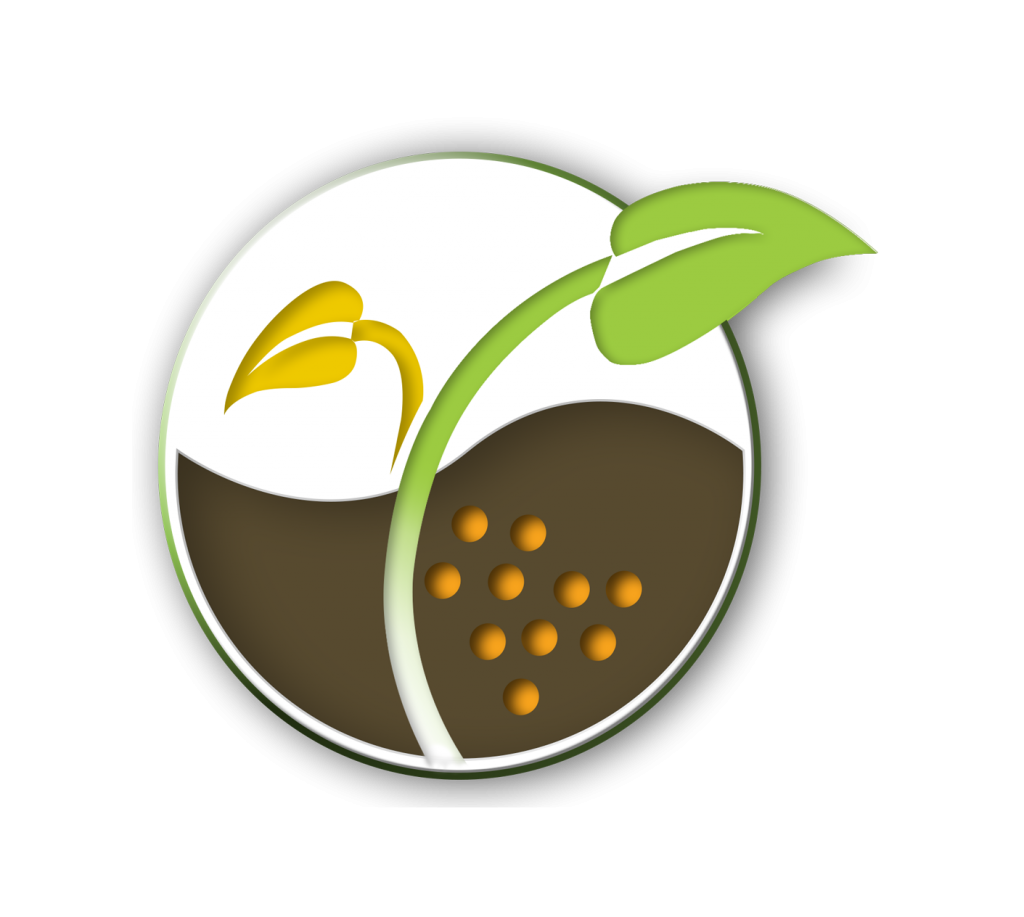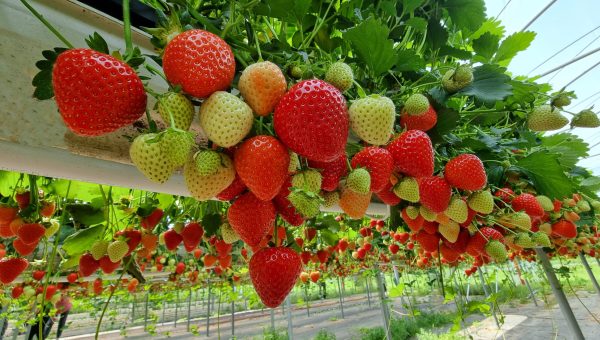Black Sigatoka or Pseudocercospora fijiensis (MYCOFI):
A Persistent Threat to Banana and Plantain Cultivation

The Black Sigatoka (Mycosphaerella fijiensis) is one of the more aggressive foliar diseases that affect the cultivation of banana and plantain in regions tropical and subtropical. Its rapid spread, its direct impact on performance and its increasing resistance to chemical fungicides make it a persistent threat persistent threat and difficult for growers to manage.
In a context where millions of people depend on bananas as a staple food as a staple food and source of income, controlling this disease is not only a technical challenge: it is an urgent necessity to ensure agronomic, economic and social sustainability. agronomic, economic and social sustainability of this key crop.

Below, we explore how this disease develops, why it is so difficult to control, and what role registered biologic solutions can play. registered biological solutions as part of an integrated, sustainable and effective approach.
Bananas: staple food and global economic engine
Globodera spp. a problem of global distribution.
The banana is not only a widely consumed fruit, but also a strategic strategic product for food food security and international international trade . Grown in more than 135 countries represents a key source of energy , fiber y potassium for millions of people around the world.
In producing regions such as Ecuador, Colombia, Costa Rica, the Philippines or Guatemala, bananas are one of the most important the banana is one of the main economic main economic pillars . The value chain generates thousands of jobs, from farm labor to export, and sustains entire rural communities. entire rural communities .

However, much of this production depends almost exclusively on a single variety: the Cavendish. Cavendish . This genetic uniformity combined with intensive monoculture intensive monoculture practices practices, increases the vulnerability of the vulnerability of the system to devastating diseases such as Black Sigatoka or Fusarium Race 4 Tropical .
For this reason, the sanitary management of the crop has become a global global priority essential to ensure:

RESILIENCE
Resilience of the production system.

PROFITABILITY
The profitability of agricultural production.

SUPPLY
of international markets.

2. What is Black Sigatoka and why is it so dangerous?
The Black Sigatoka caused by the fungus Mycosphaerella fijiensis directly affects banana and plantain banana and plantain leaves causing the loss premature loss of functional tissue . As the photosynthetic capacity of the plant is reduced, the fruits do not reach their full optimal development which decreases the performance yield, the caliber and the and the final quality of the bunch .
This pathogen was first identified in Fiji in 1963. Fiji in 1963 and has since spread rapidly through tropical regions of the Americas. America Latin America, Africa, Asia and Oceania. . Its impact is particularly severe in high-density commercial plantations and with limited genetic diversity as is the case with the Cavendish variety.


black sigatoka
edge:
class:
order:
family:
gender:
species:
SYNONYMS:
EPPO CODE:
common name:
Ascomycota
Dothideomycetes
Capnodiales
Mycosphaerellaceae
Pseudocercospora
Pseudocercospora fijiensis
Mycosphaerella fijiensis,
Paracercospora fijiensis
MYCPFI
Black Sigatoka / Sigatoka negra

Note: The most current and accepted designation is Pseudocercospora fijiensis although the name Mycosphaerella fijiensis continues widely used in agricultural and scientific agricultural and scientific publications due to tradition and recognition.

3. Symptoms and Signs of Mycosphaerella fijiensis Infestation :
How to recognize Black Sigatoka
Early detection of Black Sigatoka symptoms is essential to implement management measures before the disease seriously compromises yield and fruit quality.
Visible signs usually follow a clear progression:
1
Stripes on Young Leaves
Fine, reddish or light brown stripes, initially appearing on the underside of young leaves.
2
Dark Spots
Development of brown spots that enlarge, darken and tend to converge, covering large areas of the leaf blade.
3
Tissue Necrosis
Progressive necrosis, which rapidly reduces the green leaf area available for photosynthesis.
4
Immature Fruits
Immature fruits that must be harvested prematurely, which reduces their size, flavor, texture and commercial value.
In advanced stages, severe defoliation weakens the plant and can reduce yields by up to 50%, affecting both the grower and the entire supply chain.
4. Life Cycle of the fungus Mycosphaerella fijiensis
Learn about the Black Sigatoka cycle.
Infection begins when the spores(ascospores and conidia) of the fungus reach the leaf surface and penetrate through the stomata.

CONIDIOS
asexual spores that spread over short distances between leaves of the same plant; they facilitate secondary spread of the disease.

Ascospores
Sexual spores formed in pseudothecia, dispersed by wind over long distances; they are the main source of initial inoculum in the environment.

Under favorable environmental conditions –relative humidityabove 90 % and temperatures between 25 °C and 30 °C for several hours –the spores germinate and infect the leaf tissue.
After an incubation period of 14 to 28 days, the first visible symptoms begin to appear:
- Reddish or brown stripes.
- Expanding necrotic spots.
- Widespread darkening and progressive leaf collapse.
Once the leaf is colonized, the fungus produces new spores that are spread by wind or water, restarting the infection cycle.
If conditions remain favorable, this process repeats itself rapidly, leading to severe epidemics if appropriate management measures are not applied.
This continuous epidemiological cycle not only facilitates the expansion of the fungus in the crop, but also ensures its long-term persistence in the agricultural system, increasing the risk of reinfection in successive seasons.
The following are the main strategies to reduce the presence of Globodera spp. and minimize their impact:
4 . Symptoms: how to recognize Black sigatoka
Early detection of Black Sigatoka symptoms is essential to implement management measures before the disease seriously compromises yield and fruit quality.
Visible signs usually follow a clear progression:
- Fine, reddish or light brown stripes, initially appearing on the underside of young leaves.
- Development of brown spots that enlarge, darken and tend to converge, covering large areas of the leaf blade.
- Progressive necrosis, which rapidly reduces the green leaf area available for photosynthesis.
- Immature fruits that must be harvested prematurely, which reduces their size, flavor, texture and commercial value.
In advanced stages, severe defoliation weakens the plant and can reduce yields by up to 50%, affecting both the grower and the entire supply chain.


5. Diagnosis: Tools for effective detection.
Early detection of Black Sigatoka is key to implementing management strategies to prevent its spread and reduce its impact on yield.
The main diagnostic tools include:

Visual observation
Visual observation of symptoms in the field, especially on young leaves, to identify the first signs of infection.

Molecular analysis
Molecular analysis (PCR) that allows detecting the presence of the fungus Pseudocercospora fijiensis even before visible symptoms appear, improving early diagnosis.

Monitoring (Visual, Drone)
Monitoring with drones, visual or sensors that allow the georeferencing of infection foci and allow the evaluation of the state of the banana crop, facilitating more precise and sustainable applications.

Laboratory isolation
Laboratory isolation of the pathogen from infected leaf tissue, which allows its morphological and genetic identification.
The combined use of these techniques strengthens the monitoring system and allows more informed decisions to be made, reducing losses and optimizing resources.
6. Factors that favor its development
The development of Black Sigatoka is closely linked to favorable climatic conditions and inadequate agronomic practices, which increase inoculum pressure and make it difficult to control.
The main factors favoring the spread of the fungus Pseudocercospora fijiensis are:
Hot and Humid Climates
Warm and humid climates,
High planting density and excessive shading
High planting density and excessive shading
Presence of old or infected leaves.
Presence of old or infected leaves.
Deficient drainage and poor ventilation.
DREANAJE

Repeated use of the same active ingredients without fungicide rotation accelerates the emergence of resistant strains and reduces the effectiveness of chemical control.
Understanding these factors allows management practices to be adjusted to prevent or reduce disease outbreaks, optimizing input use and protecting crop health.
7. How Black Sigatoka can be controlled.
Integrated Disease Management (IDM) Strategies
Effective control of Black Sigatoka requires a combined and strategic approach based on Integrated Disease Management (IDM). This agronomic model brings together diverse cultural, chemical, biological and genetic practices, with the objective of:
Keep the pathogen under tolerable levels.
Reduce dependence on synthetic fungicides.
Promoting more sustainable, safe and profitable production
Cultural Management
Measures aimed at reducing the source of inoculum and improving crop conditions:
Resistant Varieties
Resistant Varieties
Planting Frame
plantation framework
Water Drainage
Water Drainage
Fertilization
Optimal Fertilization
Sanitary Pruning
Sanitary Pruning
Chemical Control
The use of contact and systemic fungicides is still a common practice in many growing areas, especially in large technified plantations.
To minimize risks and delay the appearance of resistance, it is recommended:
1
Alternation of M.A.
Alternation of active ingredients according to their modes of action.
2
Symptom Monitoring
Applications based on monitoring of symptoms and environmental conditions.
3
Scheduled programs
Adaptive programs, adjusted to the real pressure of the disease.

However, there are risks associated with their intensive use:
- Emergence of resistant strains.
- Accumulation of residues in the crop.
- Increasingly stringent regulatory restrictions.
Therefore, their integration with biological tools becomes essential.
Biological Control
The use of registered biological solutions is positioned as an effective and sustainable alternative within the MIE. Among the main tools, the following stand out:
1
Antagonistic Fungi
Antagonistic fungi, such as T34 Biocontrol® formulated with Trichoderma asperellum strain T34, which blocks the development of the pathogenic fungus, colonizes the rhizosphere and activates the plant’s natural defenses.
2
Antagonistic bacteria
Antagonistic bacteria, such as Bacillus spp. and Pseudomonas spp. among others, which act by inhibiting pathogen growth and stimulating plant defense mechanisms.
3
Vegetable extracts
Plant extracts with antifungal action, applicable as part of a complementary control program.
These solutions are more difficult to implement, mainly due to the low cost of chemicals, but their alternation with biological control will allow a reduction in chemical pressure, while promoting a more sustainable management adapted to the demands of the current market.
Genetic Resistance
A key strategy in the integrated management of Black Sigatoka is genetic resistance, focused on the development and use of banana varieties with greater tolerance to the disease.

Resistant Varieties
Use of Black Sigatoka tolerant varieties developed through conventional or biotechnological breeding programs.
Despite their potential, many do not meet the commercial standards required by the international market, especially the Cavendish segment, which limits their mass adoption in export systems.
T34 Biocontrol®: an effective and sustainable tool against Black sigatoka
One of the great challenges in the control of Black Sigatoka is the growing resistance of the fungus to chemical fungicides. This problem has prompted the search for more sustainable and technified solutions, such as:
Drone-guided applications.
Monitoring with leaf moisture sensors.
Use of biotechnology applied to disease management.
In this context, T34 Biocontrol® has established itself as an effective, safe, environmentally friendly and residue-free alternative. This registered biofungicide is based on the Trichoderma asperellum T34 strain, authorized in several countries after passing efficacy tests under GEP (Good Experimental Practices) regulations. Its use is compatible with the most demanding food safety and export standards, contributing to cleaner and more sustainable production.
How T34 Biocontrol® works
Competitive Colonization
Stimulates the plant’s natural defenses through systemic induction mechanisms.
Systemic Resistance Induction
Stimulates the plant’s natural defenses through systemic induction mechanisms.
Reduces dependence on chemical fungicides, improving the sustainability of the production system and reducing associated costs.

Approved

Effective

Insurance

Residue 0

Field testing and technical validation
Currently, T34 Biocontrol® is being evaluated in commercial plantations in Ecuador, the Dominican Republic and other Latin American countries, showing very promising results in reducing the incidence and severity of Black Sigatoka.
In addition, the banana crop is authorized for the control of Fusarium, Pythium and Sclerotinia, extending its applicability in the integral protection of roots against soil diseases in Spain.

Spain
EN 00-00283
Fusarium, Pythium, Sclerotinia

Portugal
AV-00898/AV-2021
Pythium, Sclerotinia

Ecuador
008-001-ABC
Mycosphaerella fijiensis

Dominican Republic
71-63
Fusarium, Sclerotinia, Phytophthora, Pythium, Rhizoctonia, Botrytis.

Jordan
15
Botrytis, Fusarium, Mycosphaerella spp., Leptosphaerella, Macrophomina, Pythium, Ralstonia, Rhizoctonia, Sclerotinia.

United States
87301-1
Macrophomina, Phytophthora, Pythium, Rhizoctonia, Fusarium.
8. Conclusion: towards more resilient banana production
Black Sigatoka remains one of the most serious phytosanitary challenges to banana and plantain production globally. Although fungicides have played a key role so far, the future of the crop requires more sustainable, innovative and adaptive approaches.
In this context, T34 Biocontrol® represents a strategic biological solution, easily integrated into Integrated Disease Management (IDM) programs. Its application contributes to improving crop yield and health, while reinforcing the transition towards a more environmentally friendly agriculture, people and international markets.
Moving towards resilient production is not just an option: it is a necessity. With effective, efficient and sustainable tools like T34 Biocontrol®, the path is clearer.
Do you want to know how to apply T34 Biocontrol® on your farm?
 Contact us to receive personalized technical advice, usage protocols adapted to your conditions and field test results.
Contact us to receive personalized technical advice, usage protocols adapted to your conditions and field test results. Or explore more solutions atwww.biocontroltechnologies.com
Or explore more solutions atwww.biocontroltechnologies.com 




